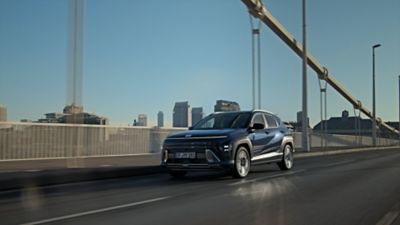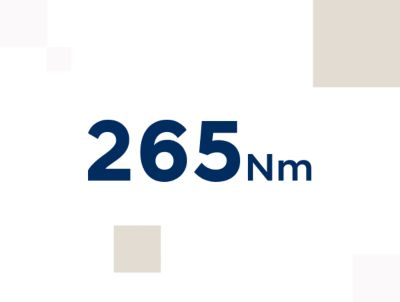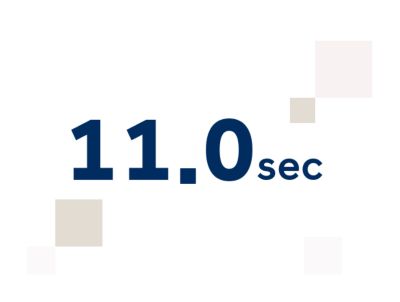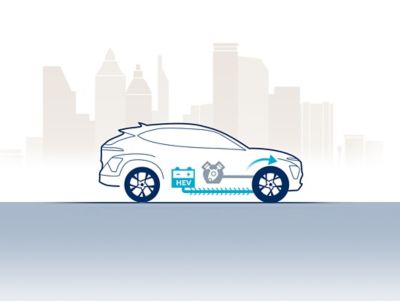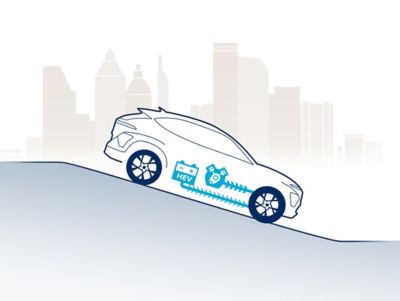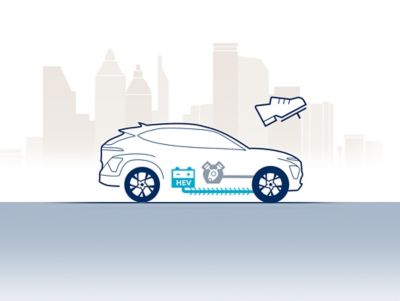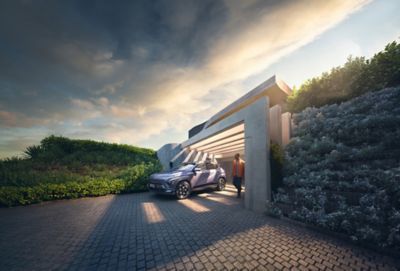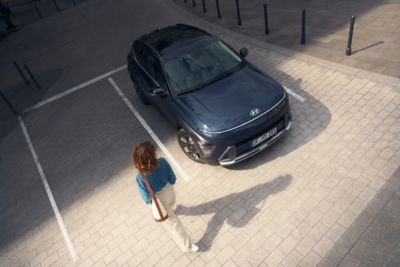The widest range of powertrains.
Developed to reduce emissions without compromising on being fun to drive, the KONA offers the widest range of powertrains in the segment. Here you can choose from a petrol engine, a petrol 48-volt mild hybrid, and a full hybrid.
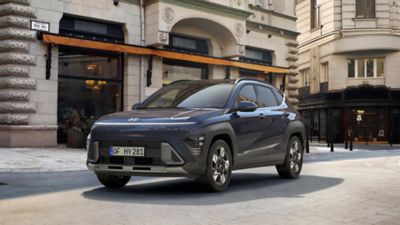
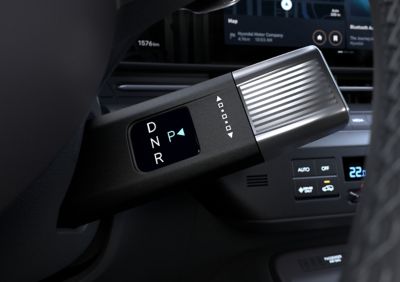
Hybrid
Electrifying efficiency: the KONA Hybrid.
The KONA Hybrid uses electric power to help you go farther on a litre of petrol. All without you having to charge a battery or change your driving habits. Taking world-class fuel efficiency to the next level, it is equipped with both a petrol engine and a battery-powered electric motor: a full-parallel hybrid drive system. Regenerative braking charges the battery, so you don’t have to.
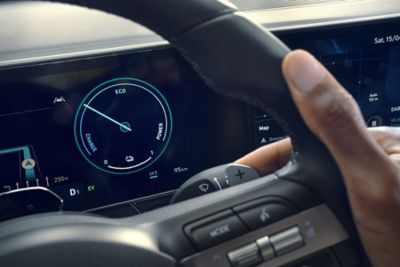
Energy flow – how the KONA Hybrid works.
Depending on the driving situation, the KONA Hybrid switches seamlessly between its petrol engine and electric motor, sometimes using both. The regenerative braking system charges the battery by using the electric motor to slow the car. The energy stored in the battery then powers the electric motor to help in acceleration, uphill driving and low speed driving. This complex energy flow is illustrated in these animations.
Petrol
Experience dynamic yet efficient driving pleasure.
The Hyundai KONA is available with a 1.0 T GDi engine delivering 115 PS and 200 Nm of torque, and a 1.6 T GDi engine with 180 PS and 265 Nm of torque. Combined with various transmission options, these engines offer dynamic driving pleasure and low fuel consumption.
